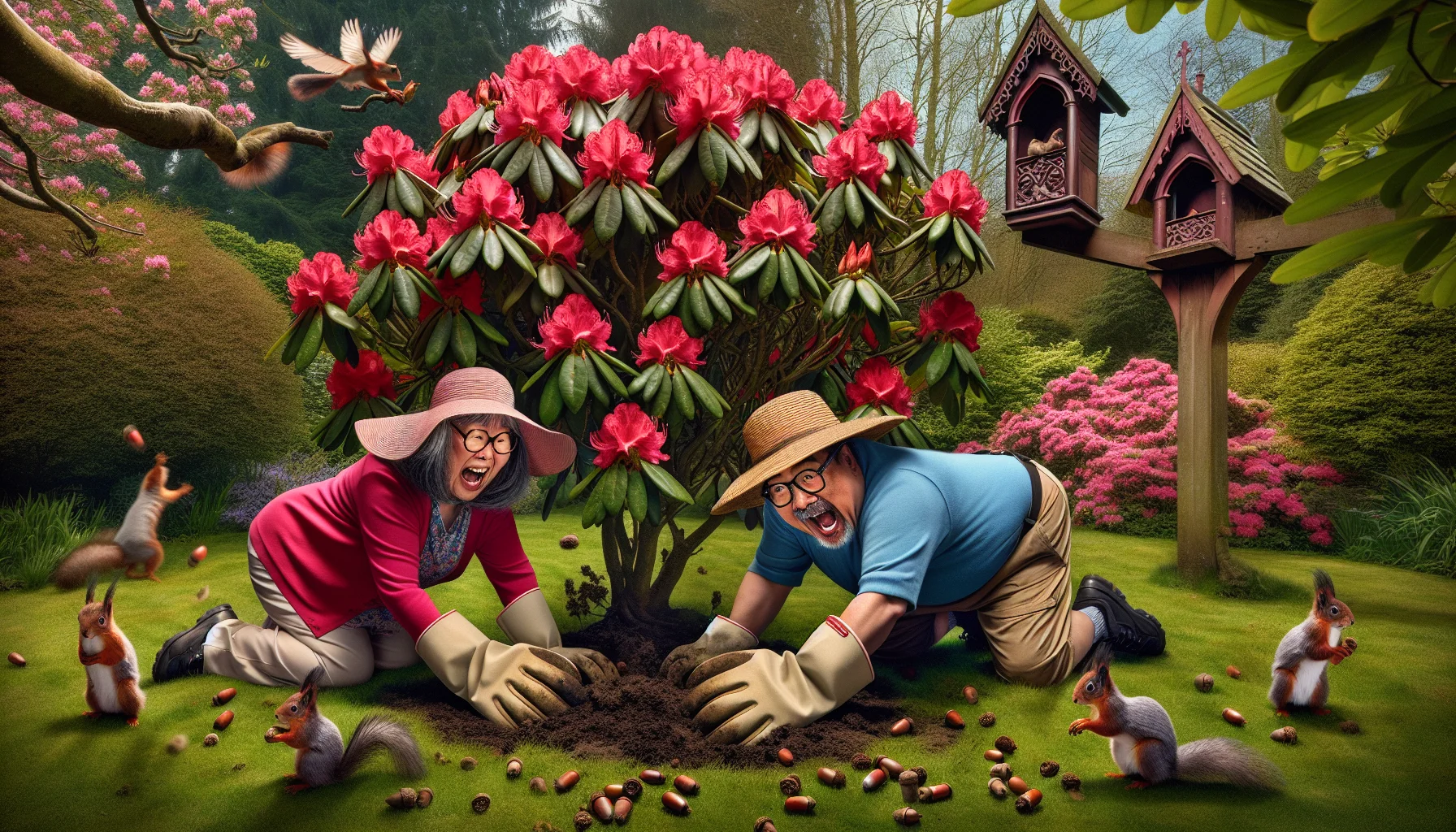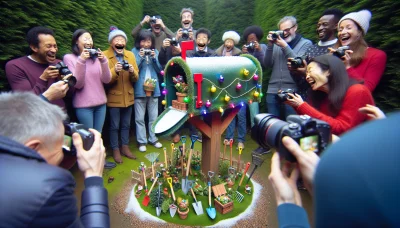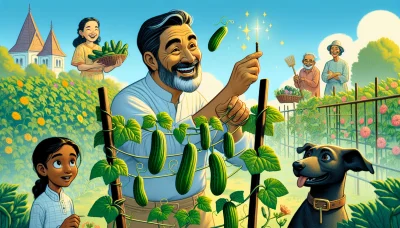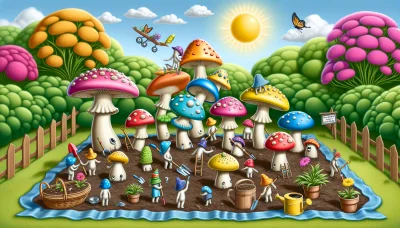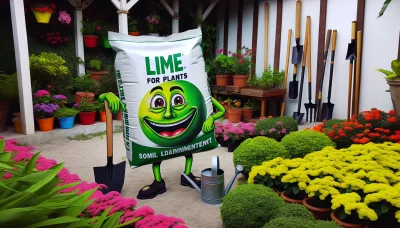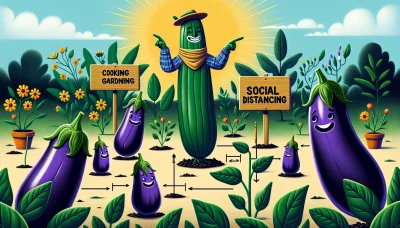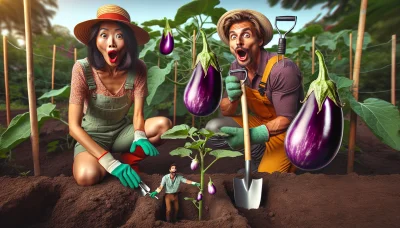Planting rhododendron Quiz
Test Your Knowledge
Question of
The Ultimate Guide to Planting Rhododendron
Rhododendrons are a cornerstone of ornamental gardening, bringing vibrant colors and lush foliage to landscapes around the world. These evergreen shrubs are renowned for their stunning flower displays and diverse species, capable of thriving in a variety of climates. This guide aims to provide gardeners with comprehensive insights into the successful planting and care of rhododendrons. From selecting the right species for your garden to understanding the specific soil and light requirements, we'll cover everything you need to know to ensure your rhododendrons flourish year after year.
Choosing the Right Rhododendron
Rhododendrons are a diverse group of plants that can add spectacular color and foliage to your garden. With over a thousand species and numerous hybrids, choosing the right variety can be daunting. The key to selecting the best rhododendron for your garden lies in understanding the different types and their specific needs. Factors such as climate, soil pH, and sun exposure are crucial in determining which rhododendron will thrive in your garden. For colder climates, look for cold-hardy varieties, while those in warmer regions should opt for heat-tolerant types. Additionally, consider the mature size of the plant to ensure it fits well in your garden space without overcrowding.
- Rhododendron catawbiense - Known for its large, purple flowers and cold hardiness, making it a great choice for northern gardens.
- Rhododendron maximum - Offers beautiful pinkish-white flowers and thrives in shaded areas, making it ideal for woodland gardens.
- Rhododendron ‘Nova Zembla’ - A popular hybrid with red flowers that can tolerate both cold temperatures and partial sun.
- Rhododendron yakushimanum - Features pink flowers that fade to white and has a compact growth habit, perfect for smaller spaces or containers.
- Rhododendron ‘Golden Lights’ - Part of the Northern Lights series, this variety has vibrant yellow flowers and offers excellent cold tolerance.
When to Plant Rhododendrons
The best time of year for planting rhododendrons largely depends on the climate zone in which they are being planted. In cooler climates, early spring planting is ideal, allowing the plant to establish its root system before the onset of winter. In warmer climates, however, planting in the fall is preferable, providing the plant with a cooler period to establish without the stress of high summer temperatures.
Steps for Preparing the Planting Site
- Choose a location with dappled shade; too much direct sunlight can harm the rhododendron.
- Ensure the soil is well-draining and has a pH of 4.5 to 6.0. Amend the soil with sulfur or peat moss if necessary to achieve the desired acidity.
- Dig a hole as deep as the root ball and twice as wide to encourage root growth.
- Mix some organic matter, such as compost or aged manure, with the excavated soil to help improve soil fertility and structure.
- Place the rhododendron in the hole, making sure the top of the root ball is level with the surrounding soil surface.
- Backfill the hole with the amended soil, gently tamping down to remove air pockets.
- Water the plant thoroughly after planting to settle the soil around the roots.
- Mulch around the base of the plant with pine needles or shredded bark to help retain moisture and maintain soil acidity.
How to Plant Rhododendrons
Planting rhododendrons requires careful attention to detail, from soil preparation to the final watering. These beautiful shrubs thrive in well-drained, acidic soil and benefit from shelter against strong winds. The process involves selecting the right location, preparing the soil, planting the rhododendron, and ensuring it receives adequate care to establish and grow. Follow these steps to ensure your rhododendrons flourish.
- Choose the Right Location: Rhododendrons prefer partial shade or filtered sunlight. Avoid direct afternoon sun, which can scorch their leaves.
- Test and Prepare the Soil: These plants thrive in acidic soil (pH 4.5-6). Use a pH tester and amend the soil with sulfur to lower the pH if needed. Ensure the planting area has good drainage and is rich in organic matter.
- Dig the Planting Hole: The hole should be twice as wide as the root ball and just as deep. This allows the roots to spread easily.
- Plant the Rhododendron: Carefully remove the plant from its container. Loosen the roots gently, place the plant in the hole so the top of the root ball is level with the soil surface, and fill the hole with a mix of soil and organic matter.
- Water Thoroughly: After planting, water the rhododendron generously to settle the soil around the roots and help eliminate air pockets.
- Mulch: Apply a 2-3 inch layer of organic mulch around the base of the plant to retain moisture, regulate soil temperature, and reduce weed competition. Keep the mulch a few inches away from the stem to prevent rot.
- Regular Care: Water the rhododendron regularly during its first growing season to help establish a strong root system. Thereafter, water during dry periods and apply an acid-forming fertilizer in spring.
Caring for Your Rhododendrons
After planting your rhododendrons, it's essential to give them the right care to thrive. Initially, ensure they are well-watered, especially during their first growing season, to establish a deep, extensive root system. Watering should be done deeply and infrequently rather than shallow and frequent sprinkles. Fertilizing rhododendrons should be approached with care; use a specialized rhododendron or azalea fertilizer in early spring, as too much can harm the plant. Pruning is rarely needed but can be done to shape the plant or remove dead or diseased branches. The best time to prune is soon after the blooms fade in spring to avoid cutting off next year's buds.
Common Pests and Diseases
- Aphids: These small pests can be found on the undersides of leaves, sucking sap and causing leaves to curl and distort. A strong jet of water or the application of insecticidal soap can manage them.
- Root Rot: Caused by poor drainage, root rot is a serious condition that can kill plants. Ensure your rhododendrons are planted in well-draining soil, and avoid overwatering.
- Lace Bugs: Lace bugs feed on the leaves, leaving them speckled and causing them to turn yellow or brown. Use insecticidal soaps or neem oil as a treatment, and ensure the plant is well-watered and fertilized to boost its resistance.
- Powdery Mildew: This fungal disease appears as a white powdery substance on the leaves. It can be treated with fungicides and by ensuring plants are not overcrowded, allowing for good air circulation.
Rhododendron Planting FAQs
Welcome to our Rhododendron Planting FAQs section. Here, we aim to answer common questions you might have about planting, growing, and caring for your rhododendrons. Whether you're a first-time gardener or looking to refine your green thumb, we've got you covered.
| Question | Answer |
|---|---|
| When is the best time to plant rhododendrons? | The best time to plant rhododendrons is during the cooler months of spring or fall to avoid heat stress on the plants. |
| What type of soil do rhododendrons prefer? | Rhododendrons thrive in well-drained, acidic soil with a pH between 4.5 and 6.0. |
| How much sunlight do rhododendrons need? | They prefer partial shade but can tolerate morning sun with afternoon shade or dappled sunlight throughout the day. |
| How often should I water my rhododendron? | Water deeply once a week to keep the soil moist but not soggy, adjusting for rainfall and temperature. |
| Do rhododendrons need fertilizer? | Yes, fertilize in late winter or early spring with a slow-release, acid-forming fertilizer designed for rhododendrons or azaleas. |
